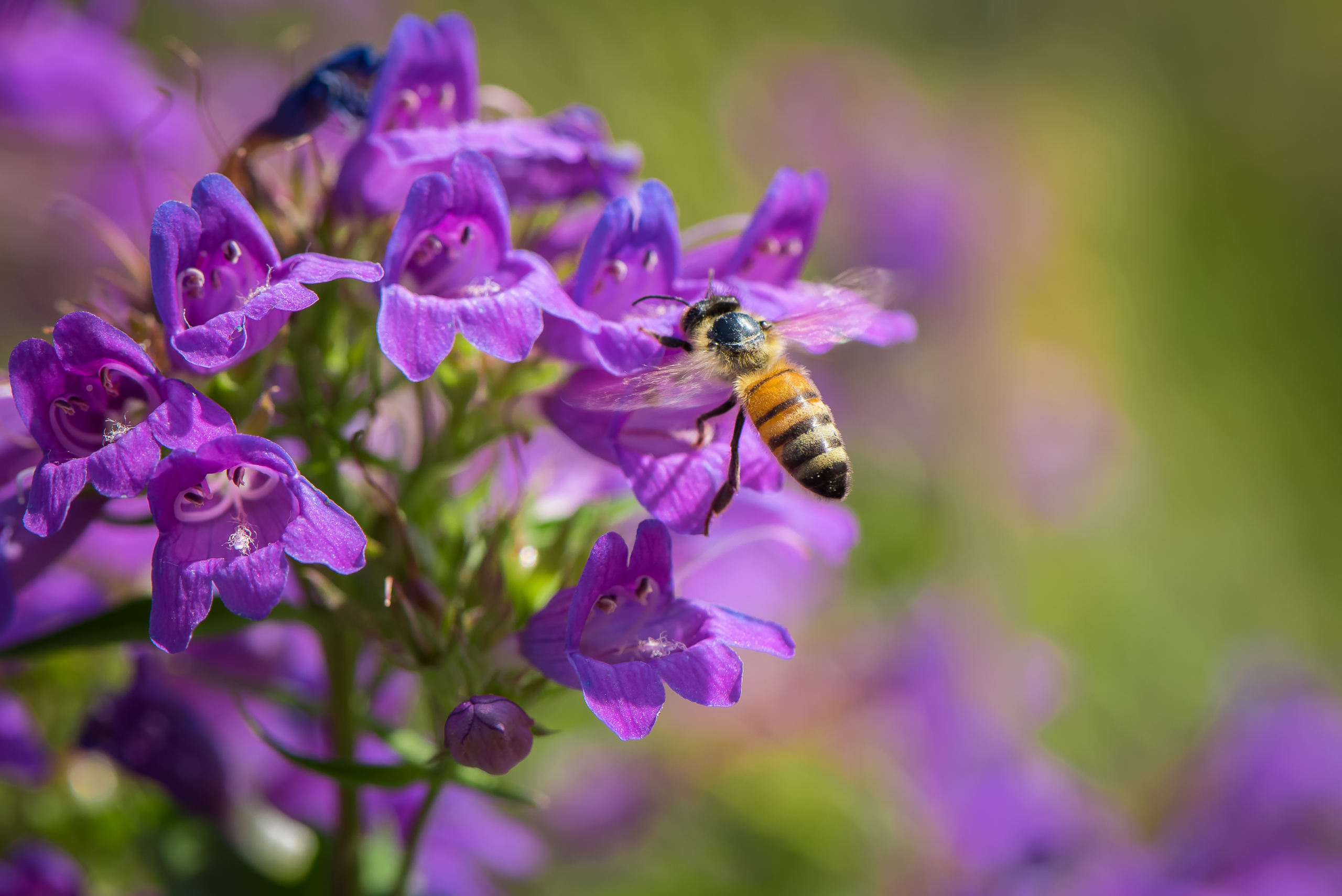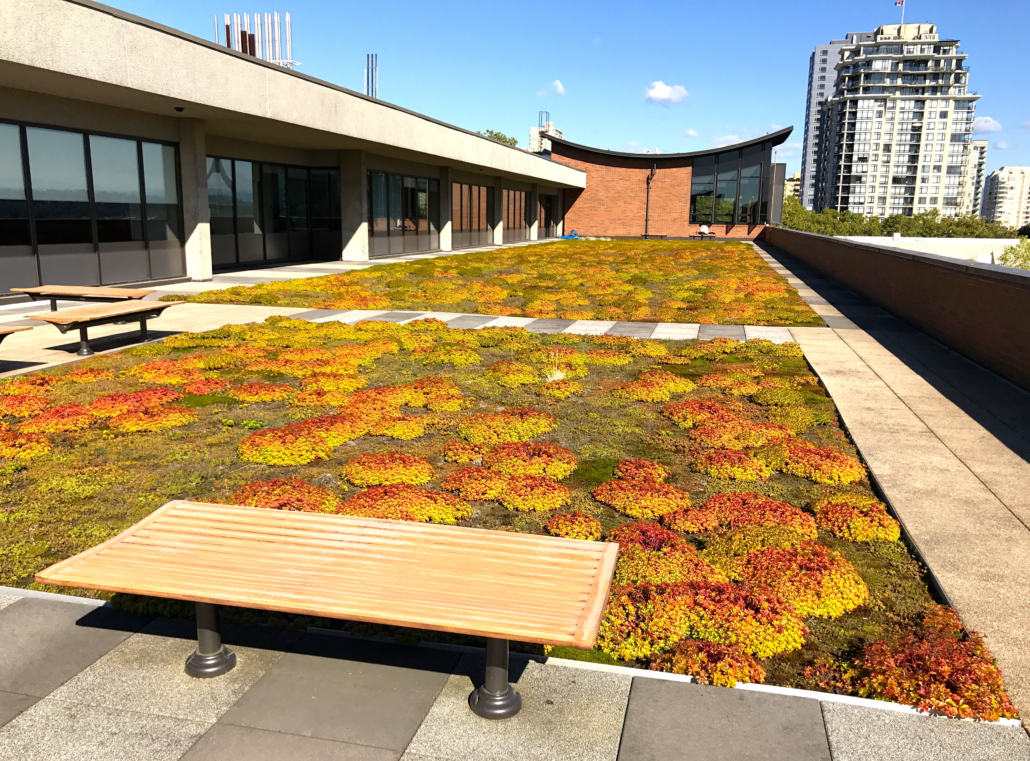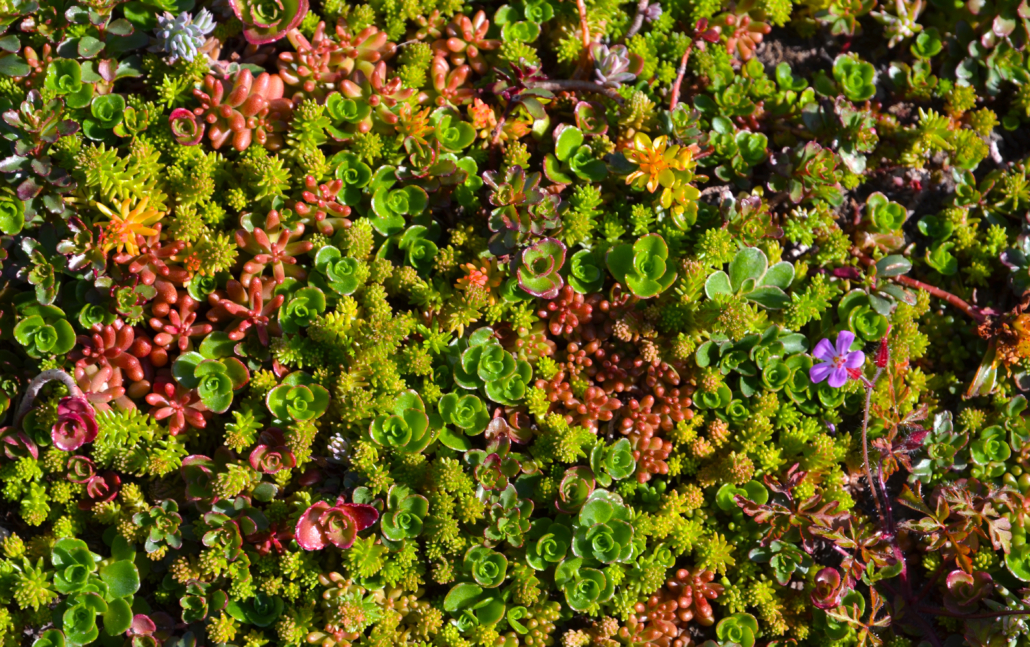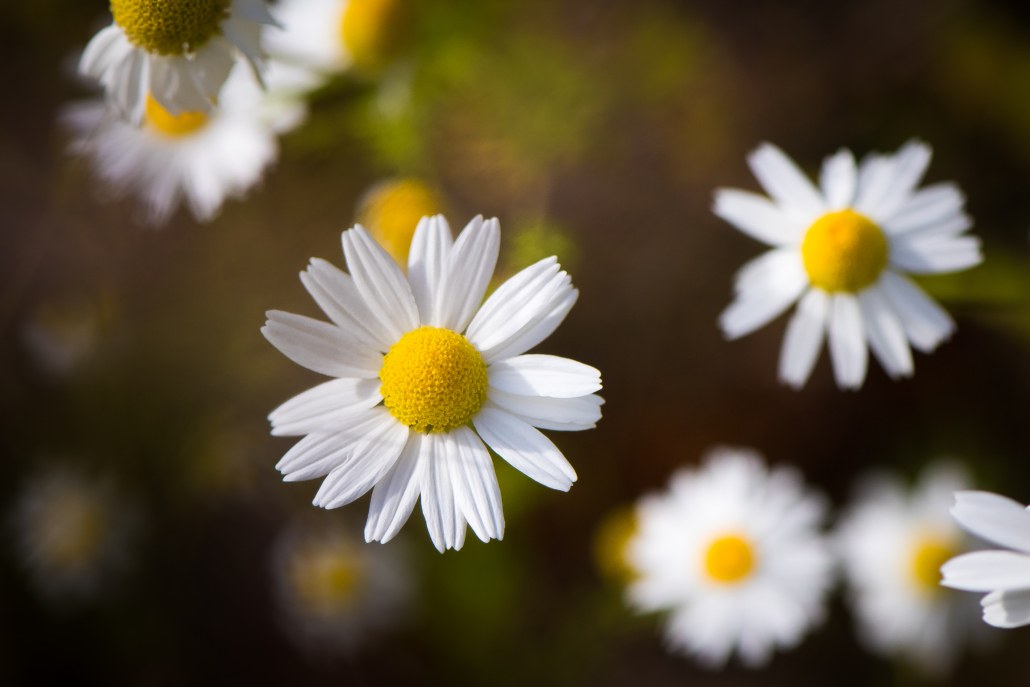Illustrations of Biodiversity in Urban Architecture.
Architek excels in weaving biodiversity into urban landscapes through state-of-the-art green infrastructure such as green roofs, vertical gardens, and green facades. These systems not only boost the aesthetic and economic value of urban structures but also bolster urban biodiversity by fostering vital habitats for diverse species. For instance, projects like the Vandusen Botanical Gardens in Vancouver was completed as one of our first complex projects in 2011, with three distinct green roof sections: The Landbridge which is a relatively flat semi-intensive area, The Petals where we employed a gentle slope engineered green roof system with shear barriers and The Oculus, a steep slope area in the center which required us to employ custom shear barrier and soil erosion design, this example exemplifies the integration of biodiverse ecosystems in urban spaces, bridging the gap between nature and city life.
What is Biodiversity?
Biodiversity encapsulates the extensive range of life forms on our planet, encompassing variations at genetic, species, and ecosystem levels. It is fundamental to the natural sustainability of all life forms, instilling balance and fortifying the resilience of ecosystems. This multifaceted nature of biodiversity enables ecosystems to adapt to disruptions such as Heat Island Effect, climate change and natural disasters, thereby providing indispensable services including water purification, pollination, climate stabilization, recycling of nutrients and the natural cooling of the surrounding areas that otherwise would reflect overheated temperatures within a concrete jungle if living architecture wasn’t within the urban mix. These functions are crucial for maintaining the health and viability of our planet.
Ecosystem Biodiversity and Urban Environments.
Urban biodiversity is crucial for maintaining ecological balance and enhancing the quality of life within city landscapes. Architek’s initiatives, such as extensive and intensive green roofs, support a variety of plant species and wildlife, enhance air quality, and mitigate urban heat island effects. These ecosystems play essential environmental roles, including stormwater retention, carbon sequestration, and providing refuge for pollinators and other wildlife within the urban concentration. Additionally, biodiverse urban ecosystems play a crucial role in climate regulation by moderating temperature extremes and diminishing the reliance on mechanical cooling systems. This reduction in HVAC usage not only leads to cost savings for developers and property owners but also enhances the energy efficiency of buildings. Green roofs, in particular, serve as effective insulators, thereby stabilizing local climates and indirectly impacting broader weather patterns.
A Catalyst for Biodiversity.
Hydroseeding is an advanced planting technique used by Architek to efficiently establish vegetation on green roofs and other urban landscapes dependent on the specific bespoke project, which can result in cost savings, easier installations, more practical for project locations and adaptable. This method involves spraying a mixture of seeds, mulch, and fertilizers over prepared soil, which is ideal for promoting rapid vegetation growth and preventing erosion.
Crafting a biodiverse garden or green roof in Canada necessitates the judicious selection of indigenous plant species that are inherently adapted to the local climate and soil conditions, a key factor we consistently take into consideration when designing, installing and maintaining our completed or ongoing projects. These species are pivotal in reducing maintenance needs and bolstering local ecosystems by providing essential habitats for a diverse array of wildlife such as birds, bees and butterflies.
Below, we outline exemplary species for Canada, each contributing uniquely to the ecological equilibrium and enhancing both the visual charm and the resilience of garden ecosystems as per the Network of Nature and the Nature Conservancy of Canada.
- Trees, Shrubs, and Vines:
- American Beech (Fagus grandifolia): This tree provides dense foliage which is excellent for shade and supports a variety of wildlife.
- Native Range: NB, NS, ON, PE, QC
- Gray Dogwood (Cornus racemosa): A shrub that produces white flowers and berries that attract birds and small mammals (Network of Nature).
- Native Range: MB, ON, QC
- American Beech (Fagus grandifolia): This tree provides dense foliage which is excellent for shade and supports a variety of wildlife.
- Herbaceous Flowers (Forbs):
- Blue Violets (Viola sororia): These flowers are not only visually appealing but also attract butterflies and serve as a food source for caterpillars.
- Native Range: BC, SK, MB, ON, QC, NB, PE, NS, NL
- Painted Trillium (Trillium undulatum): Known for its distinctive white and pink flowers, it’s beneficial for pollinators such as bees (Nature Conservancy of Canada).
- Blue Violets (Viola sororia): These flowers are not only visually appealing but also attract butterflies and serve as a food source for caterpillars.
- Grasses, Sedges, and Rushes:
- Old Switch Panic Grass (Panicum virgatum): A tall grass that serves as habitat for various insects and birds.
- Native Range: SK, MB, ON, QC, NS
- Broadleaf Cattail (Typha latifolia): Commonly found in wetlands, these are crucial for water filtration and provide shelter and nesting materials for birds (Network of Nature).
- Native Range: BC, AB, SK, MB, ON, QC, NB, PE, NS, NL, YT, NT, NU
- Old Switch Panic Grass (Panicum virgatum): A tall grass that serves as habitat for various insects and birds.
- Ferns and Allies:
- Lady Fern (Athyrium filix-femina): Thrives in moist, shaded areas and adds texture and depth to garden settings.
- Native Range: SK, MB, ON, QC, NB, PE, NS, NL, NL
- Cinnamon Fern (Osmunda cinnamomea): Recognizable by its striking cinnamon-colored fronds, this fern is useful for adding diversity to the understorey of wooded areas (Network of Nature).
- Native Range: NL, NB, NL, NS, ON, PE, QC
- Lady Fern (Athyrium filix-femina): Thrives in moist, shaded areas and adds texture and depth to garden settings.
Climate Change and Its Implications for Biodiversity.
The adverse effects of climate change on biodiversity are profound, threatening the survival of species and the integrity of ecosystems. Architek’s sustainable building practices, such as our advanced site-water management systems, mitigate these effects by enhancing ecological resilience, as mentioned in one of our last blog posts “Harnessing The Power of Blue Roof Systems in Stormwater Management”. By integrating biodiversity into urban landscape, Architek helps maintain ecosystem services that buffer against climate disturbances, promoting environmental stability and adaptability in the face of changing global conditions, such as Urban Heat Island Effect.
Strategic Partnerships for Enhanced Sustainability.
In partnership with Rope and Cable Canada, Architek leverages synergistic strengths to reinforce the structural aspects of our green installations while enhancing their sustainability and biodiversity impacts. This collaboration ensures that green architectural elements are not only visually striking but also robust and functional, contributing significantly to the ecological and social value of urban spaces.
This enhanced discussion aims to deepen understanding of the critical role biodiversity plays in urban environments and how targeted architectural solutions by Architek are vital in fostering sustainable urban landscapes. Additionally, Architek is committed to sharing our expertise and insights on green infrastructure and its benefits to biodiversity at conferences and industry events. Our team is open to speaking engagements and collaborations that promote sustainable urban development and educate on the integration of biodiversity in architectural practices.









